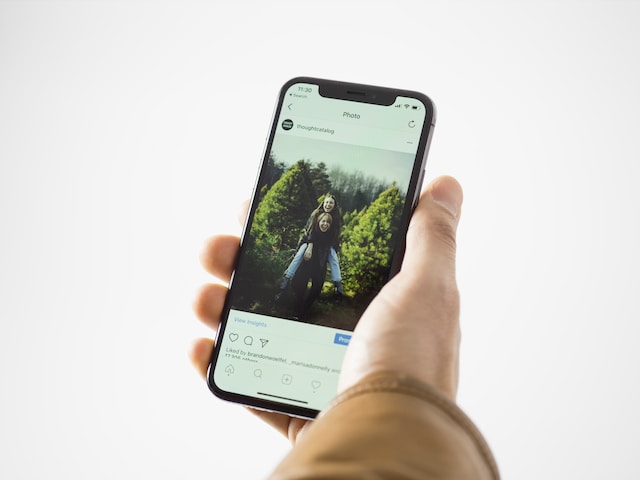- 29 April 2023
- 84
Unpacking the Influence of Social Media on Contemporary American Protests and Movements

Introduction
The power of social media has revolutionized the way people mobilize and create change in contemporary American society. From Black Lives Matter to #MeToo, social media serves as a platform for voices that might otherwise go unheard. But just how influential is social media in shaping protests and movements? In this blog post, we’ll unpack the impact of social media on modern-day activism, exploring the ways it shapes behavior, mobilization tactics and ultimately affects societal change. So let’s dive in!
The Role of Social Media in Protests and Movements
The role of social media in contemporary protests and movements has been a topic of discussion for many years now. Social media platforms like Twitter, Facebook, Instagram, and YouTube have become integral parts of how people organize and mobilize around causes they care about.
One way that social media has impacted protests is by providing a platform for individuals to share their experiences with larger audiences. This can range from sharing videos or pictures of police brutality to live-tweeting events as they unfold on the ground.
Social media also allows protesters to quickly disseminate information about upcoming events, including meeting times and locations. By doing so, it’s easier for individuals who are interested in participating in these actions to find out where they need to go and what time they need to be there.
Another way that social media has contributed to contemporary protests is by making it easier for organizers to communicate with each other across different geographic areas. This means that groups can collaborate on initiatives without needing everyone present at all times.
Social media provides an opportunity for activists who may not feel comfortable speaking out publicly or attending physical protests due to safety concerns or constraints such as disabilities or geographical distance from being part of the movement virtually through online activism campaigns like petitions, fundraisers etc.
Trends in Social Media Use and Impact on Protest Behavior
Social media has revolutionized the way people communicate and organize, especially when it comes to protests and movements. In recent years, social media platforms like Twitter, Facebook, Instagram, and TikTok have been instrumental in mobilizing activists and spreading awareness about various issues.
One trend is that social media has made it easier for individuals to participate in protests without physically being present at a demonstration. This means that people who may not have had the opportunity or resources to attend a protest can still show their support by sharing information online or participating in virtual events.
Another trend is that social media has amplified marginalized voices. Historically oppressed communities have used social media to speak out against systemic injustices they face daily. These platforms provide a space for these communities to share their experiences with a wider audience and demand change.
Additionally, social media allows protesters to document police brutality and other forms of state violence during demonstrations. Live-streaming videos on platforms like Facebook and Twitter make it possible for anyone with an internet connection to bear witness to what’s happening on the ground.
Trends in social media use indicate that these platforms will continue playing an essential role in contemporary American protests and movements.
The Relationship between Social Media Use and Political Mobilization
The use of social media has transformed the way people organize and participate in political events. It has become a powerful tool for mobilizing communities, especially younger generations who are more likely to engage with social media platforms.
Social media allows individuals to express their opinions and connect with others who share similar beliefs, leading to the formation of online communities centered around common causes. This can lead to increased awareness and participation in political movements.
Moreover, social media provides a platform for marginalized groups who may not have had access to traditional modes of communication or resources necessary for organizing protests. Social media amplifies underrepresented voices and makes it easier for them to push back against oppressive systems.
However, critics argue that while social media can increase awareness about important issues, it does not necessarily lead to real-world action or change. There is also concern that algorithms on these platforms may contribute to the spread of misinformation or inflammatory content.
Despite these criticisms, there is no denying that social media plays an integral role in contemporary American protests and movements by facilitating political mobilization among diverse populations.
Conclusions
After analyzing the influence of social media on contemporary American protests and movements, it’s clear that these platforms have played a significant role in shaping political mobilization and activism. Social media has provided activists with new tools to communicate, organize, and mobilize supporters more effectively than ever before.
Protests that once may have gone unnoticed or received minimal attention can now gain traction through viral hashtags and live-streamed videos. Moreover, social media provides activists with access to a global audience which amplifies their messages beyond traditional forms of media coverage.
However, while social media has undoubtedly empowered marginalized voices in society, it also comes with its own set of challenges. For instance, misinformation or fake news can spread rapidly across social networks leading to confusion among protesters’ ranks.
Despite these challenges and limitations associated with the use of social media for protest activity – one thing is certain: digital technologies are here to stay! And as long as people continue fighting for rights and justice – they will find ways to leverage technology towards those ends.

